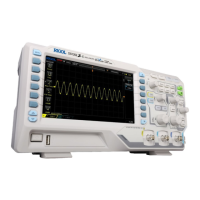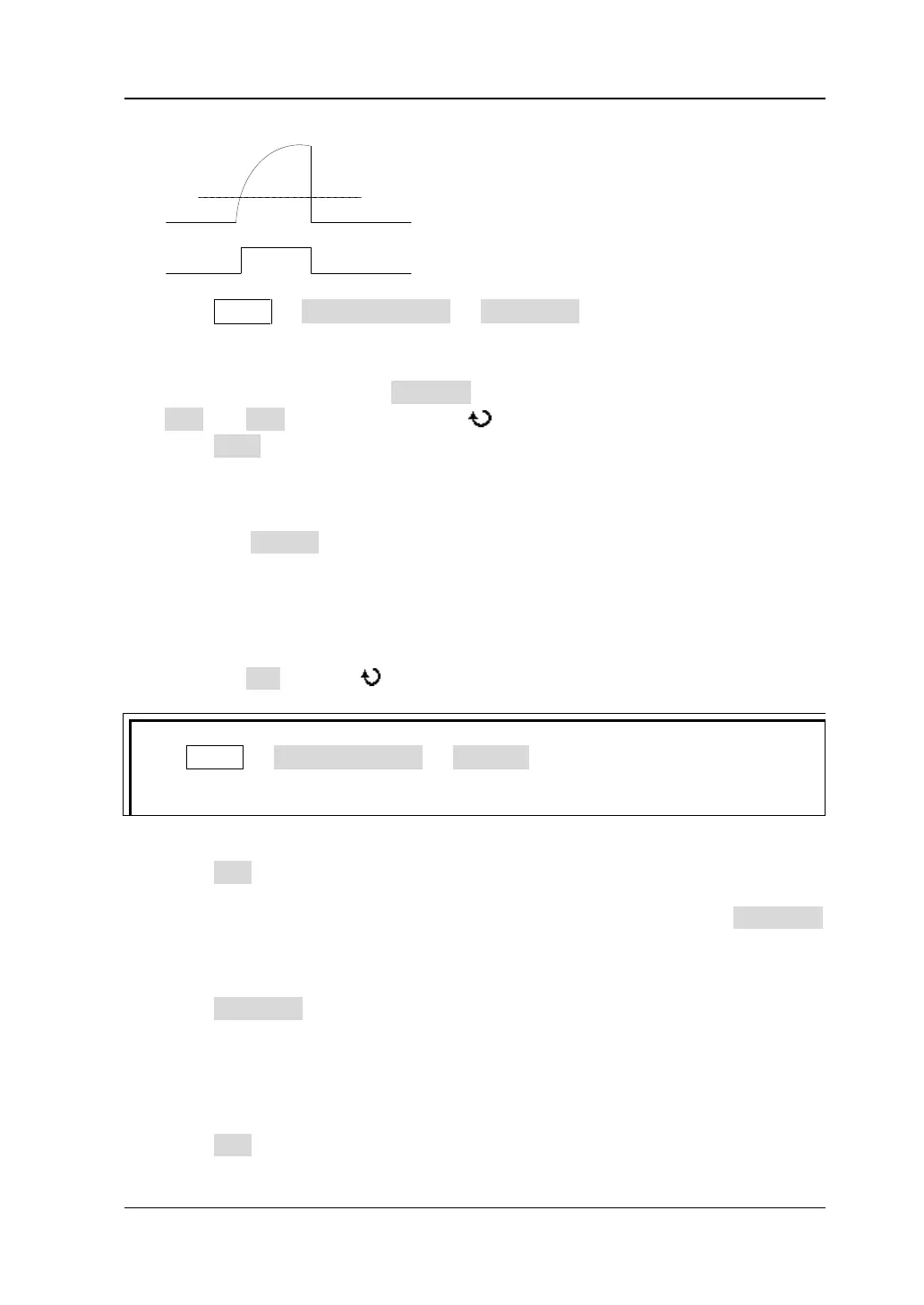Chapter 7 Protocol Decoding RIGOL
DS1000Z-E User Guide 7-3
Press MATH Decode Options Auto Thre. to turn on or off the auto
threshold function. When auto threshold is turned on, the middle value of the
channel waveform is defined as the digital threshold level. When auto threshold
is turned off, you can press Thre.Set to enter the threshold setting menu. Press
CH1 and CH2 respectively and use to set the threshold of each channel.
Press 50% and set the current threshold to 50% of the current waveform trace
manually.
5. Display-related Setting
Press Format to set the display format of the bus to HEX, DEC, BIN, ASC or
LINE.
Note: In LINE format, the actual values of the bus are displayed in binary
form and the order is consistent with the bus transmission order. This format
is only valid for the serial bus which includes LSB and MSB endian. If MSB
endian is selected, LINE format is the same as binary.
Press Pos and use to adjust the vertical display position of the bus.
Tip
Press MATH Decode Options ASC List, characters, numbers and ASCII
table of the common control characters will be displayed on the screen. You can
instantly query the corresponding ASCII value.
6. Noise Rejection
Press NRJ to enable or disable the noise rejection function. Noise rejection can
remove the data without enough duration on the bus to eliminate the burst
glitch of the actual circuit. When the noise rejection is enabled, press NRJ.Time
to set the desired rejection time and the range is from 0.00 s to 100 ms.
7. Clock Compensation
Press CLK Tune to set the compensation time. You can fine-tune the phase
difference between the clock line and data line. The setting range is from -100
ms to 100 ms. A negative value indicates the clock moves forward and a positive
value indicates the clock moves backward.
8. Curve
Press Plot to enable or disable the curve function. When "ON" is selected, the

